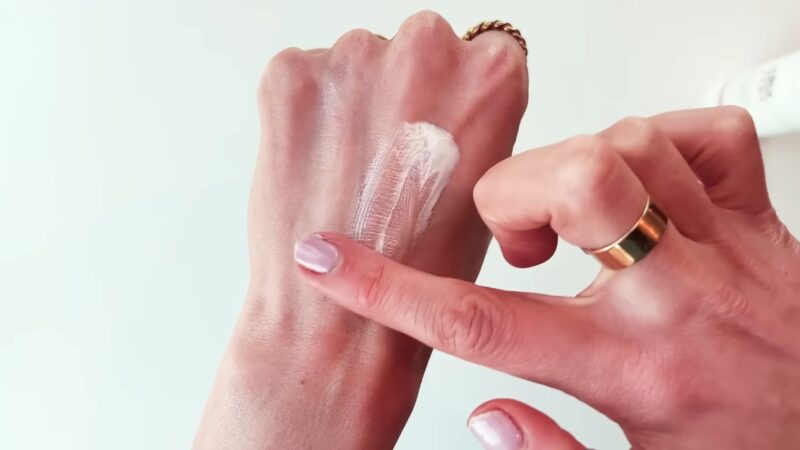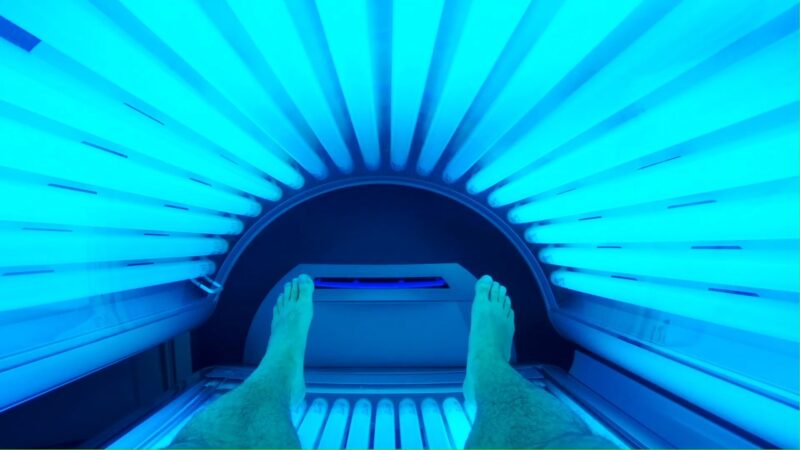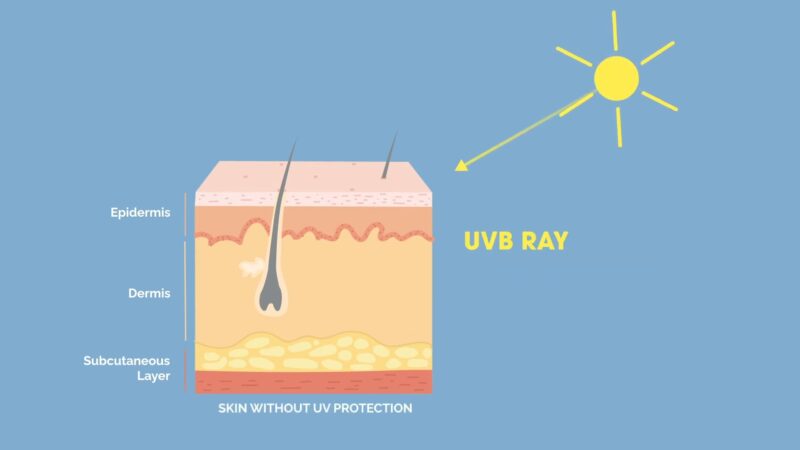Tanning, a process many seek for that sun-kissed glow, is not as straightforward as it seems. The duration it takes to achieve a tan varies widely based on numerous factors.
Understanding these elements and how they interact can help you tan more effectively and safely.
How Long It Takes and Why?
The average time varies significantly depending on several key factors. Primarily, your skin type plays a crucial role.
For example, people with lighter skin generally take longer compared to those with darker skin, owing to differences in melanin levels. Melanin, the pigment responsible for skin color, reacts to sun exposure, and higher melanin levels mean quicker tanning.
Environmental factors are also influential. The intensity of the sun’s rays, dictated by your location’s latitude and climate, affects tanning time.
Being closer to the equator or in places with less atmospheric pollution can lead to faster tanning due to stronger UV radiation. Additionally, the time of day matters; UV rays are at their peak between noon and 3 p.m., offering the fastest tanning but also the highest risk of sun damage.
Finally, altitude and surrounding environments modify tanning speeds. Higher altitudes mean increased UV exposure, with every 1000 meters adding up to 12% more UV radiation.
Snow and water bodies also reflect UV rays, amplifying exposure.
Why Sunscreen is Important?

Sunscreen plays an essential role in this. It’s a misconception that sunscreen prevents tanning; rather, it filters out harmful UV rays to reduce the risk of sunburn and skin damage.
Using sunscreen with an appropriate SPF (Sun Protection Factor) is crucial for a healthy process. A higher SPF provides more comprehensive protection against UVB rays, the primary cause of sunburn.
Experts recommend using at least SPF 30 to balance tanning and skin protection effectively. Reapplying sunscreen every two hours and after swimming or sweating ensures continuous protection.
How to Prepare Your Skin?
Proper skin care can significantly impact the quality and duration of your perfect bronze skin. Exfoliating your skin before sun exposure removes dead skin cells, promoting a more even and longer-lasting effect.
This step prevents patchy skin and flaking, ensuring a smooth canvas for an even color. Hydration is also critical.
Moisturized skin will get the right note more efficiently and maintain it longer. Using hydrating lotions and drinking plenty of water keeps your skin in optimal condition.
Can a Certain Diet Make a Difference?
Your diet can subtly influence your skin’s ability to get a bronze note. Foods rich in beta-carotene and lycopene, such as carrots, tomatoes, and watermelon, can enhance your skin’s natural sun protection and potentially lead to a deeper tan.
These nutrients are antioxidants that help protect skin cells from UV damage and support overall skin health. While diet alone won’t drastically change the speed, it’s a beneficial complement to your routine, offering added protection and potentially enhancing your skin’s response to sun exposure.
What About Different Times of the Day?
The sun’s position in the sky affects the intensity of UV rays. Sunbathing between noon and 3 p.m. exposes you to the strongest UV radiation, which can accelerate tanning but also increases the risks of sunburn and skin damage.
It’s a balance between achieving a tan and protecting your skin. For a safer approach, consider tanning in the morning or late afternoon when the sun’s rays are less intense.
While it might take longer to tan during these times, it reduces the risk of harmful effects.
What Are Tanning Beds?

They are often touted as a quick way to achieve the perfect skin appearance. However, they are not a safe alternative to natural options.
Tanning beds emit concentrated UV radiation, significantly increasing the risk of melanoma and other skin cancers. They also contribute to premature skin aging and eye damage.
It’s important to weigh these risks against the desire for a quicker tan. Opting for natural sun exposure, with appropriate protection and moderation, is a healthier choice.
How to Achieve a Deeper Tan?
For those seeking a deeper skin tone, it takes about 2-3 days for a noticeable color change. This process can be accelerated using products like tan accelerators or intensifiers, which stimulate melanin production.
However, the key is consistency and patience, getting a shade gradually and safely over several days. Tanning every other day allows your skin to rest and regenerate melanin without the risk of overexposure.
It’s a strategy that can lead to a deeper, more durable tan while minimizing the risks associated with excessive sun exposure.
UV Radiation and Its Impact

Understanding the role of UV radiation is crucial in the tanning process. UV radiation comes in two main types: UVA and UVB.
UVA rays penetrate the skin more deeply, leading to immediate pigmentation, while UVB rays are primarily responsible for delayed effects and sunburns. The UV index, which measures the strength of sunburn-producing ultraviolet radiation, is a useful tool in determining the best time to tan.
A higher UV index indicates stronger UV radiation and a quicker tanning process, but also a higher risk of skin damage. It’s important to check the UV index for your area and take appropriate protective measures, especially during peak UV hours.
The UV index of 5 is perfect since it will provide the right level of UV lights while having a lower risk at the same time. On the other hand, proper sun lotion is still essential.
How Can Altitude Impact the Process?
Altitude is another significant factor. As you ascend in altitude, the atmosphere becomes thinner, leading to less filtration of UV rays.
This increased exposure can accelerate tanning but also heightens the risk of sunburn and skin damage. For instance, at higher mountain altitudes, you’re exposed to more intense UV radiation, necessitating stronger sun protection.
The surrounding environment also plays a role. Snow, for example, can reflect up to 80% of UV rays, increasing the intensity of exposure.
Similarly, being near water bodies can magnify UV radiation by about 15%. These reflections can lead to faster tanning but require extra caution to avoid overexposure.
What are the Health Risks?
While it can be aesthetically pleasing, it’s important to be aware of the health risks associated with excessive sun exposure. These risks include skin cancer, sunburn, dehydration, heat rash, premature aging, eye damage, and immune system suppression.
Skin cancer, including melanoma, is of particular concern, as UV radiation is a major risk factor. To minimize these risks, tanning should be done in moderation, with proper skin protection and hydration.
Regular skin check-ups and monitoring for any changes in skin moles or markings are also advisable.
Tips for Safe and Effective Tanning
To tan safely and effectively, follow these tips:
- Use Sunscreen: Always apply a broad-spectrum sunscreen with at least SPF 30, reapplying every two hours and after swimming or sweating.
- Hydrate: Drink plenty of water to keep your skin hydrated.
- Time Your Tanning: Avoid the strongest sun rays between noon and 3 p.m. Opt for morning or late afternoon sun exposure.
- Wear Protective Clothing: Use hats, sunglasses, and cover-ups to protect sensitive areas.
- Gradual Tanning: Build up your tan slowly over several days to avoid sunburn and promote a longer-lasting tan.
- Dietary Support: Include foods rich in beta-carotene and lycopene in your diet.
FAQs
Can I tan for 20 minutes without sunscreen?
No, you should not tan without sunscreen. Sunscreen can reduce your risk of skin cancer and prevent sunburn. You should use a broad-spectrum sunscreen that blocks both UVA and UVB rays.
How long do tans last?
Tans usually last for a few weeks, depending on how fast your skin cells shed. The more you expose your skin to the sun or tanning beds, the more melanin your skin produces. Melanin is the pigment that gives your skin its color and protects it from UV damage.
Will I tan in 20 minutes?
It depends on your skin tone, the strength of the sun, and the time of day. People with darker skin have more melanin and tend to tan faster than people with lighter skin. The sun is strongest between 10 a.m. and 4 p.m., so you are more likely to tan during those hours.
Does sunscreen stop tanning?
No, sunscreen does not stop tanning completely. It only reduces the amount of UV rays that reach your skin. You can still tan with sunscreen, but it will take longer and be less intense. Sunscreen also helps prevent premature aging and skin cancer.
Why won’t my legs tan?
There are several possible reasons why your legs won’t tan. One is that your legs have less blood flow than other parts of your body, which means less oxygen and nutrients for your skin cells. Another is that your legs are often covered by clothing, which blocks the sun. A third reason is that your legs have thicker skin than your face or arms, which makes it harder for the UV rays to penetrate.
Last Words
Tanning is a process influenced by various factors, from skin type to environmental conditions. While there’s no one-size-fits-all answer to how long it takes to tan, understanding these elements can help you achieve your desired results safely and effectively.
Remember, the key to a beautiful tan lies in balance and protection. –
